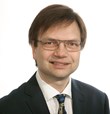
Megaroller
About
A Quick Overview
Get a quick overview of MegaRoller with this downloadable factsheet.
About The Project
About MegaRoller
MegaRoller is a collaborative research and innovation project which aims to develop and demonstrate a next-generation Power Take-Off (PTO) solution for wave energy converters.
The proposed PTO technology for a 1MW oscillating wave surge converters (OWSC) device is based on multiple hardware and software innovations. MegaRoller is therefore expected to generate extensive know-how in the area of PTO design and control system, at the same time decreasing the levelised cost of electricity (LCOE) produced thanks to OWSC devices below €150/MWh.
The methodologies used in the project will be applicable to many other types of wave energy converters. MegaRoller will also propose new standards for PTO control, thus benefiting the whole ocean energy community.
In the short term, the project hopes to increase the power conversion from 70 to 88%, improve reliability of the converters (double the lifetime and service intervals), decrease operation & maintenance costs by 75%, boost power density by 2.8 times and improve power quality.
By 2050, MegaRoller's 40,000 MW power plants could generate 400,000 jobs in Europe only and decrease CO2 emissions by 110 M annually.
The full-scale PTO will be validated in a PTO test rig available at AW-Energy in Finland.
The facility will allow the consortium to:
- create power matrices for the wave conditions of different sites
- fine-tune the PTO control algorithms
- certify the operation of the PTO
- ensure that the produced electricity conforms to the
- various grid codes of different market areas.
Project organisation and work package descriptions
Meet the work package leaders on the Video & Media page
Interaction with Wave Resource - WP1
Pauline Laporte Weywada
WP1 focuses on increasing the understanding of the wave-structure interaction problem, via the development of a numerical model capable of characterising the environmental conditions at the selected site, and a distributed, fully coupled, nonlinear WEC loads model, suitable for the performance assessment of the dual drivetrain. WP1 will also design and manufacture the upgrade required for the test bench.
Design - WP2
Jussi Åkerberg (AWE)
WP2 focuses on the design of the PTO subsystems (hardware and software), taking into account environmental requirements (i.e. minimization of the LCA values).
Implementation - WP3
Olli Nyrövaara (ABB)
WP3 focuses on the implementation of the production and assembly of the PTO hardware subsystems, and the development of the PTO control software systems.
Integration - WP4
Jarno Hakulinen
WP4 focuses on integration of the PTO subsystems (hardware and software).
Validation and Impact Evaluation - WP5
Risto Tiusanen (VTT)
WP5 focuses on demonstrating, through a systematic dedicated process, that the models and technical solutions produced in the project meet the project objectives issued regarding PTO performance, power quality, reliability and cost reduction.
Dissemination, Standardization and Exploitation - WP6
Hans Christian Bolstad (SINTEF)
WP6 focuses on the communication about the action, dissemination of research results to the marine energy community and stakeholders, the standardization of the novel components and the exploitation of such components (including licensing to other WEC designers and manufacturers).
Scientific coordination - WP7
Jussi Åkerberg
Coordination - WP8
Ilpo Honkanen
WP7 and WP8 cover the project management, to include reporting to the commission and managing the interaction of all project partners, ensuring that the project hits milestones and deliverables.
Contacts

Hans Christian Bolstad
